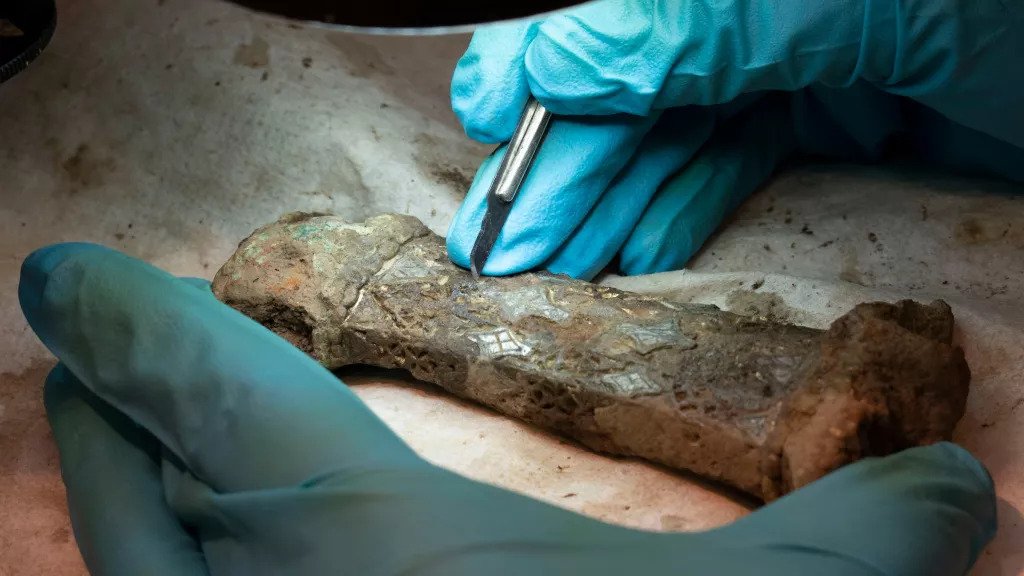Damaged pieces of rare Viking sword reunited after 1,200 years apart
Two pieces of an ornate Viking sword that had been separated for about 1,200 years have been reunited and still fit together like a puzzle. The pieces were discovered a year apart by amateur treasure hunters in Norway.

The first finding occurred last year, when a metal detectorist in Stavanger, along Norway’s west coast, uncovered a small, odd piece of metal while poking around a farm.
The man handed the fragment over to the local archaeological museum and was unsure what it was — until this spring when his friend and fellow metal detectorist unearthed the rest of the artefact nearby.
Those two small chunks of metal turned out to be part of a massive Viking Age sword.
The sword is “of a rare type, known from Scandinavia but also found in Western Europe (in the areas known today as France, Britain and Ireland) and Eastern Europe, e.g. Hungary,” Ann Zanette Glørstad, an archaeologist at the University of Oslo in Norway, told Live Science in an email.
Though the blade is missing, the sword’s hilt is richly decorated with intricate carvings and gold and silver details. Each end of the cross-guard is shaped like an unidentified animal.
Based on its ornamentation, Glørstad thinks that the sword may have been forged in the Frankish Empire or England around 800 A.D.
However, it could possibly have been forged by a talented Norwegian smith who was inspired by Frankish weapons, she noted. Of the roughly 3,000 Viking swords recovered in Norway, only about 20 match the newly discovered weapon’s profile — and its owner remains a mystery.


“We can only speculate as to whom it belonged,” Glørstad said.
“However, it was a highly decorative and impressive sword, and it must have belonged to someone with the means to acquire it, as well as someone who wanted to demonstrate their social status.”
Swords from this era sometimes had their owner’s names inscribed on the blade, according to the Art Institute Chicago(opens in new tab), but because this weapon’s blade is lost, archaeologists will have to rely on other clues to infer its owner’s identity.
The area has seen its share of Viking royalty; in 1883, the grave of a rich Viking queen was unearthed not far from where the sword was discovered.
“We knew that this area was of special importance, but that we should find something like this was very unexpected!” Håkon Reiersen, the acting head of the museum’s collection department, said in a translated statement(opens in new tab).
The sword has joined the collection at the Stavanger Museum of Archaeology, where it will be on display once it has been properly restored and preserved.
In the meantime, archaeology enthusiasts can follow the museum’s website(opens in new tab), and Instagram(opens in new tab) for updates on the sword’s restoration.





